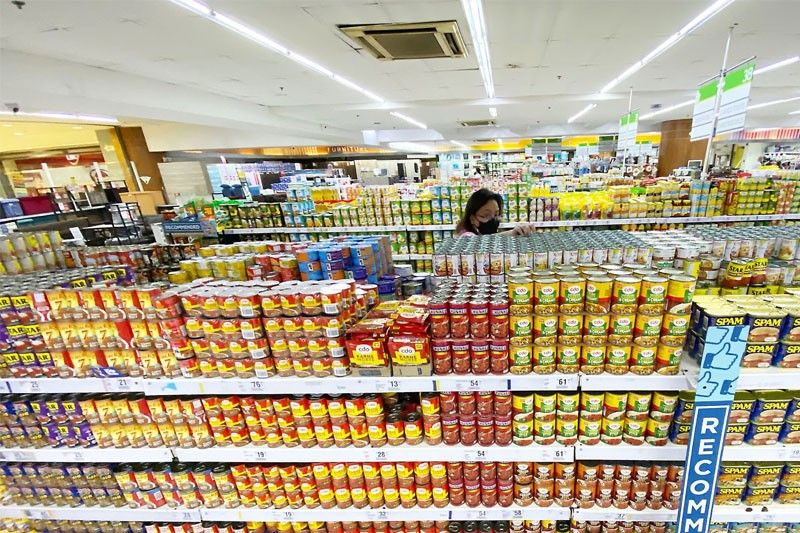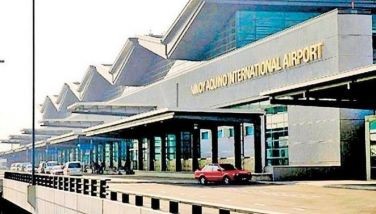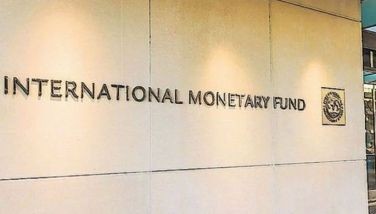Inflation sizzles in September after super typhoon worsened supply woes

MANILA, Philippines — Inflation remained painfully high in September after a devastating typhoon that hit the country during the month exacerbated persistent supply problems.
In a briefing on Wednesday, the Philippine Statistics Authority reported inflation quickened 6.9% year-on-year in September. This was much faster than the 6.3% recorded in the preceding month.
This exceeded the national government target of 2-4% inflation this year. It nevertheless settled within the Bangko Sentral ng Pilipinas’ 6.6-7.1% forecast range for September.
The latest reading was the fastest pace of inflation this year.
Sought for comment ahead of the official data release, Nicholas Antonio Mapa, senior economist at ING Bank in Manila, said inflation could quicken in the coming months.
“Inflation likely to accelerate further in coming months reflecting third tranche if fare hikes kicking in by October. Food prices also pressured by storm damage,” he said in a Viber commentary.
Central Luzon, oft-considered as the country’s rice granary, incurred most of the damage as super typhoon “Karding” swept through the region by the end of September.
The prices of consumer goods and services are likewise strained by supply pressures believed to be a byproduct of the pandemic, all while demand has recovered following the economy’s full reopening in past months. Mapa noted that high inflation persists due to the emergence of second-round effects.
Domini Velasquez, chief economist at China Banking Corp., agreed with Mapa’s assessment. For her, inflation has yet to reach its peak, but could hit that by next month.
“Core inflation is still expected to trend up as secondary round effects become more pronounced,” she said in a Viber message.
Velasquez expects that the peso’s weakness, reaching a new low P59 against the dollar on Monday, would impact the way prices are moving.
“For the rest of the year, we expect inflation to settle at 7.0% or more every month in the last quarter. Moreover, despite lower prices, inflationary pressures have broadened as core inflation is gaining traction,” she said.
According to National Statistician Claire Dennis Mapa, the increase in transport fares and pricier fuel has already spilt over to food prices.
“If we look at it, items trending up weigh more compared to those that are decreasing,” he said.
7% inflation?
Data broken down would show that in Metro Manila, food inflation is at 8.8% versus 7.5% in areas outside the economic capital in September. Vegetable prices in the National Capital Region skyrocketed to 23.7% that month while these same prices stayed flat in areas outside.
Core inflation, which strips out volatile commodities such as fuel, eased to 4.5% in September. It stood at 2.6% in the same period last year. ING’s Mapa explained that core inflation declined due in part to the exclusion of rice and corn prices from the math.
Despite this, inflation has not yet peaked, as economists expect. ING’s Mapa expects inflation to keep its uptrend and could even hit above 7% in the coming months. This, he said, should prompt the BSP to stay hawkish.
READ: Painful battle against inflation continues as BSP hikes rates anew
“A third tranche of transport fare hikes was implemented in October and the impact will be felt for at least the next 12 months. Meanwhile, food inflation should stay elevated after supply disruptions caused by storm damage,” he said.
“Elevated inflation should keep BSP on notice with the central bank likely resorting to a 50bp rate hike at the November meeting,” he added.
EXPLAINER: What the BSP's rate hike means for you
- Latest
- Trending






























